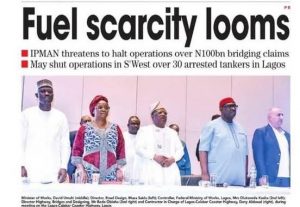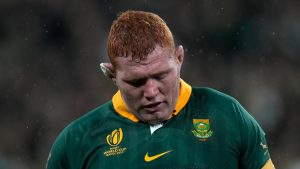Protesters could push Hong Kong into a ‘very dangerous situation,’ government warns

Protesters swarmed the streets of Causeway Bay on Hong Kong Island on Sunday night, blocking key roads in the ninth consecutive weekend of political unrest. Police fired a barrage of tear gas in a bid to disperse the crowds.Earlier, in a separate demonstration in the eastern New Territories, a group of protesters gathered around a police station, throwing objects and breaking windows. General strikes have also been organized for Monday morning, as well as demonstrations in seven different parts of the city.The protests began in early June in opposition to a controversial bill that would have allowed extradition to mainland China but have since extended to more ambitious demands like universal suffrage. The city’s leader, Carrie Lam, has shelved the extradition bill but not formally withdrawn it.The government on Sunday night condemned the unrest, saying in a statement that “blatant violation of law, wanton destruction of public peace and violent attacks on the police will harm Hong Kong’s society, economy and our people’s livelihood.””Such acts have already gone far beyond the limits of peaceful and rational protests for which the government and general public will not condone under any circumstances,” the statement added. “Otherwise they will push Hong Kong into a very dangerous situation.” While the vast majority of the city remains safe, the protests have affected daily life in many popular areas — especially on weekends. Saturday’s marches began in Mong Kok, one of the world’s most densely populated places, and made their way to the popular shopping district of Tsim Sha Tsui, which wasn’t on the protest route approved by authorities. Some demonstrators also attempted to block the Cross-Harbour Tunnel, a vital traffic hub connecting Hong Kong Island to Kowloon. Protesters vandalized the exterior of the Tsim Sha Tsui police station, destroyed multiple vehicles and set a fire. Traffic lights were also shut off after underground cables were dug up and cut, while railings were pulled from the sidewalk to use as barriers against riot police.Pitched battles between riot police and protesters raged into the night. Police accused protesters of throwing petrol bombs, bricks, glass bottles and other objects at officers, with more than 20 people arrested for offenses including unlawful assembly and assault.Many protesters wore makeshift protective gear. Some used pool toys as shields while others had wrapped their extremities in cellophane to protect their skin from tear gas.Heated confrontations also took place in Wong Tai Sin, about 5 kilometers (3.2 miles) away from Mong Kok. A smaller gathering in support of the police was held Saturday in Victoria Park, Causeway Bay, titled “Give Peace a Chance.” It ended without violence. ]]]]>]]>The protest movement began in early June with broad support. Organizers estimated more than 2 million people marched against the extradition bill in one of the initial demonstrations.However after nine weeks of protests, the movement appears to be taking an economic toll. Business leaders say sales are down compared to last year, while one firm found that the number of flight bookings to the city appears to be falling.Yet the mostly young protesters — who say they face a much bleaker political and economic future than their parents did, with Hong Kong one of the world’s most expensive and unequal places to live — have shown few signs that they’re willing to back down.
]]]]>]]> Anger at police has been building over what many protesters claim are heavy-handed tactics. Officers also came under scrutiny after a slow response to a mob attack in the suburb of Yuen Long last month.Eight people, including the leader of a banned pro-independence party, were arrested last week for possession of offensive weapons and suspected bomb-making materials. And last month, police seized what is thought to be one of the largest ever caches of high-powered explosives uncovered in the city.A total of 44 people, including more than a dozen students and a 16-year-old girl, were also charged with rioting after an illegal protest last Sunday brought parts of the city to a standstill.Some protesters say this is their last chance to affect change before 2047, when the “one country, two systems” model that Hong Kong is governed by expires.”One country, two systems” was enacted when the UK handed control of Hong Kong to China in 1997, and was supposed to guarantee that Hong Kongers would continue to enjoy legal and political rights not granted in mainland China. “We are pessimistic about Hong Kong but we still have to come out — because if we don’t, we lose our last sliver of hope,” one man, surnamed Yu, told CNN at the Mong Kok march on Saturday.CNN’s Ben Westcott and Brad Lendon contributed to this report






